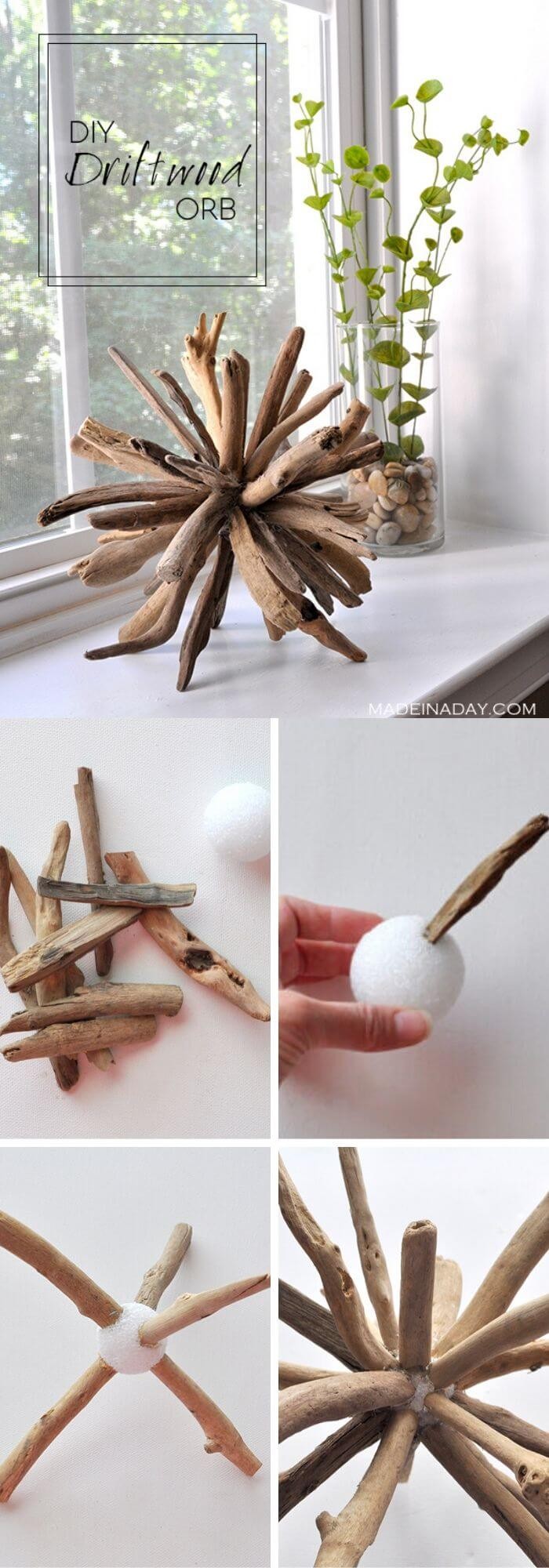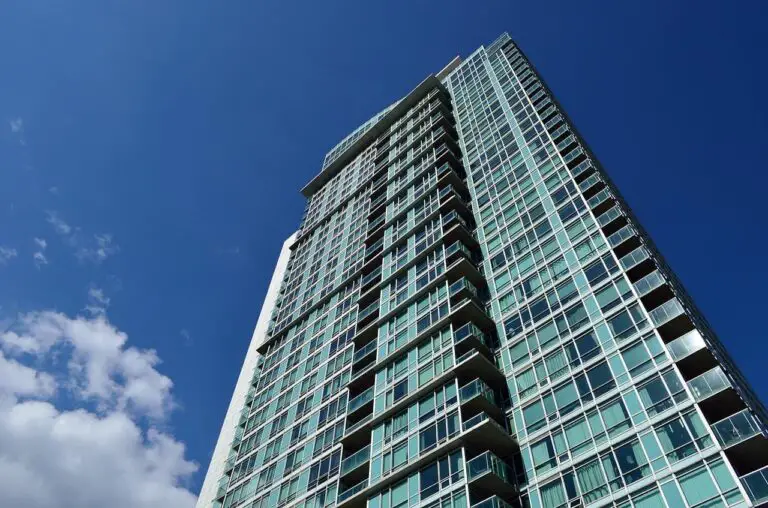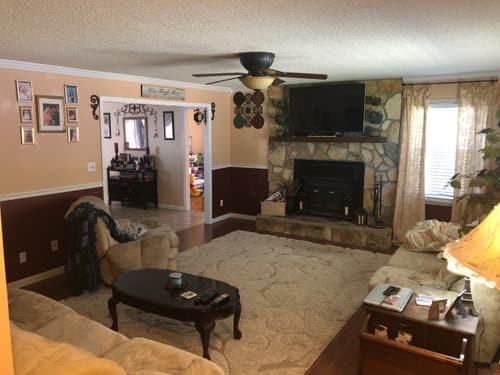10+ Best Alternatives To Sliding Glass Doors
When it comes to enhancing the aesthetic appeal and functionality of your home, sliding glass doors are often the go-to choice. Their ability to seamlessly integrate with the surrounding design while allowing for an abundance of natural light is unmatched. However, their inherent vulnerabilities, including detachable latches and breakability, make them a less-than-ideal security option.
This raises the question: what alternatives exist that can provide similar benefits without compromising on safety? In this article, we’ll explore 10 sliding glass door alternatives that can help you achieve your desired level of visual appeal and operational ease.
Pros and cons of sliding glass doors
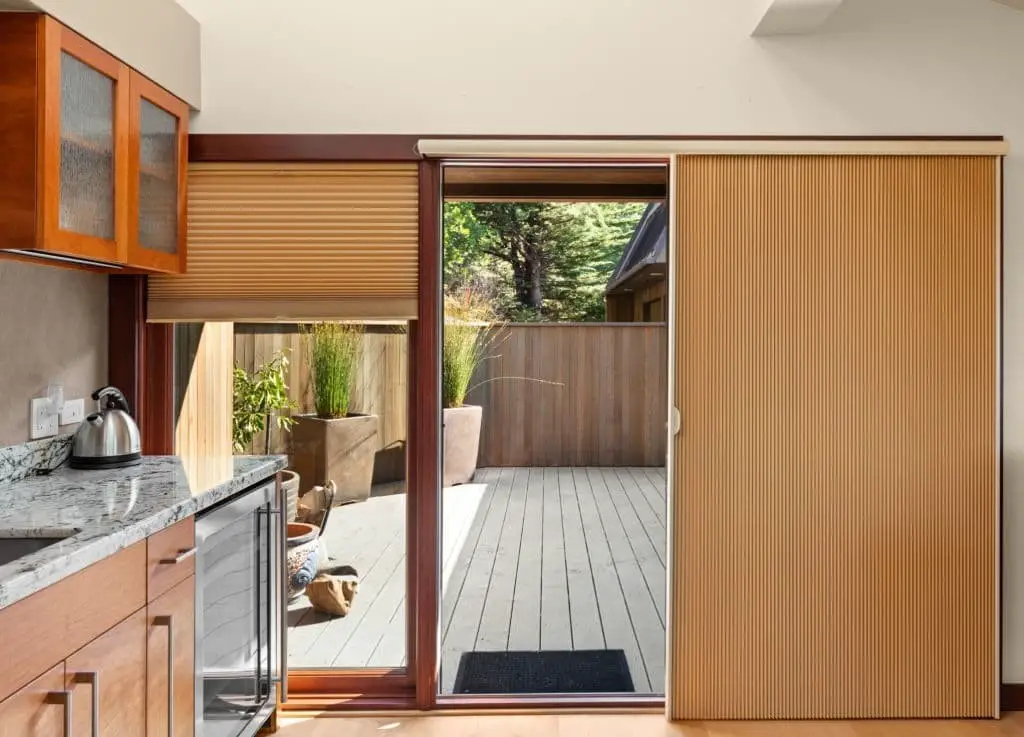
When deciding between a sliding door and other options, it’s essential to weigh the advantages and disadvantages of this popular door type. To help you make an informed decision, let’s explore the key benefits and drawbacks of sliding doors that you should consider.
Pros
Sliding glass doors offer a unique combination of aesthetic appeal and practical benefits. They seamlessly connect indoor and outdoor spaces, allowing natural light to pour in and creating a sense of continuity. This design choice is particularly effective for showcasing beautiful landscapes or interior designs. In terms of energy efficiency, sliding glass doors are a smart investment. By harnessing daylight, you can reduce your reliance on artificial lighting and lower your electricity bills.
Additionally, many models come equipped with exterior screens that enable airflow while keeping out unwanted elements. This feature not only saves energy but also enhances indoor air quality. Space-saving is another advantage of sliding glass doors. They don’t require swing-out hinges or cumbersome door handles, freeing up valuable floor space. Furthermore, their sleek design can create an optical illusion of increased width and depth, making compact spaces feel more expansive.
As a bonus, many sliding glass doors are eco-friendly, crafted from sustainable materials like glass and metal. Their manufacturing processes often prioritize low-VOC finishes and minimize hazardous air pollutants, making them a guilt-free choice for environmentally conscious homeowners.
Cons
Sliding glass doors come with a unique set of pros and cons, but one of their most significant drawbacks is undoubtedly the cost. Not only are they more expensive to manufacture due to the use of specific materials, but they also require more maintenance than other door types. This increased vulnerability means that minor issues can quickly escalate into major problems.
The glass construction, for instance, makes them prone to breaks and stains, while harsh weather conditions can cause shattering. Furthermore, the materials used may rust or warp over time, reducing their lifespan to around 10 years. In terms of security, sliding glass doors are also a concern. Unlike traditional doors, they lack built-in latch systems, making them more susceptible to intruders.
How do I identify a sliding glass door?
Sliding glass doors are characterized by a fixed panel attached to rollers, which move along a track to provide seamless entry and exit. They come in two primary configurations: single and double sliding glass doors. To prevent jamming when opening or closing, stoppers are often integrated into the design. While there are many types of sliding glass doors, seven prominent categories include aluminum, timber, cavity, wardrobe, screen, French, and electronic or automatic sliding doors.
10 alternatives to sliding glass doors
When considering replacement options for a sliding glass door, there are several alternative door types to explore. From modern innovations to classic designs, here’s a look at some popular choices:
French doors

When it comes to patio glass doors, a timeless choice is one that boasts a top-to-bottom design reminiscent of sliding doors, but with glass pockets scattered throughout. This style creates an illusion of space, floods the area with natural light, and offers a classic look that never goes out of fashion. The best part? It can be customized to fit any shape, style, or type of glass.
More recently, French doors have seen a resurgence in popularity, thanks to the rise of ‘French sliders.
‘ Essentially, this is a sliding door that incorporates the classic design elements of traditional French doors. Comprising four panels, two on either side serve as stable sidelights, framing the space while the remaining two panels slide partially, creating a seamless transition between indoors and outdoors.
The pros and cons of these designs are well worth considering. On the plus side, they can be used equally effectively as interior or exterior doors, offering a high level of versatility.
However, they do come at a higher cost and may require more complex installation. Additionally, their classic design gives the illusion of space, while also providing an abundance of natural light.
On the downside, these designs may not be the best fit for every home style, requiring a certain level of spatial planning to accommodate them effectively. Furthermore, they do have a higher energy efficiency rating than some other options, but can still provide a high level of aesthetic appeal.
Pivot doors
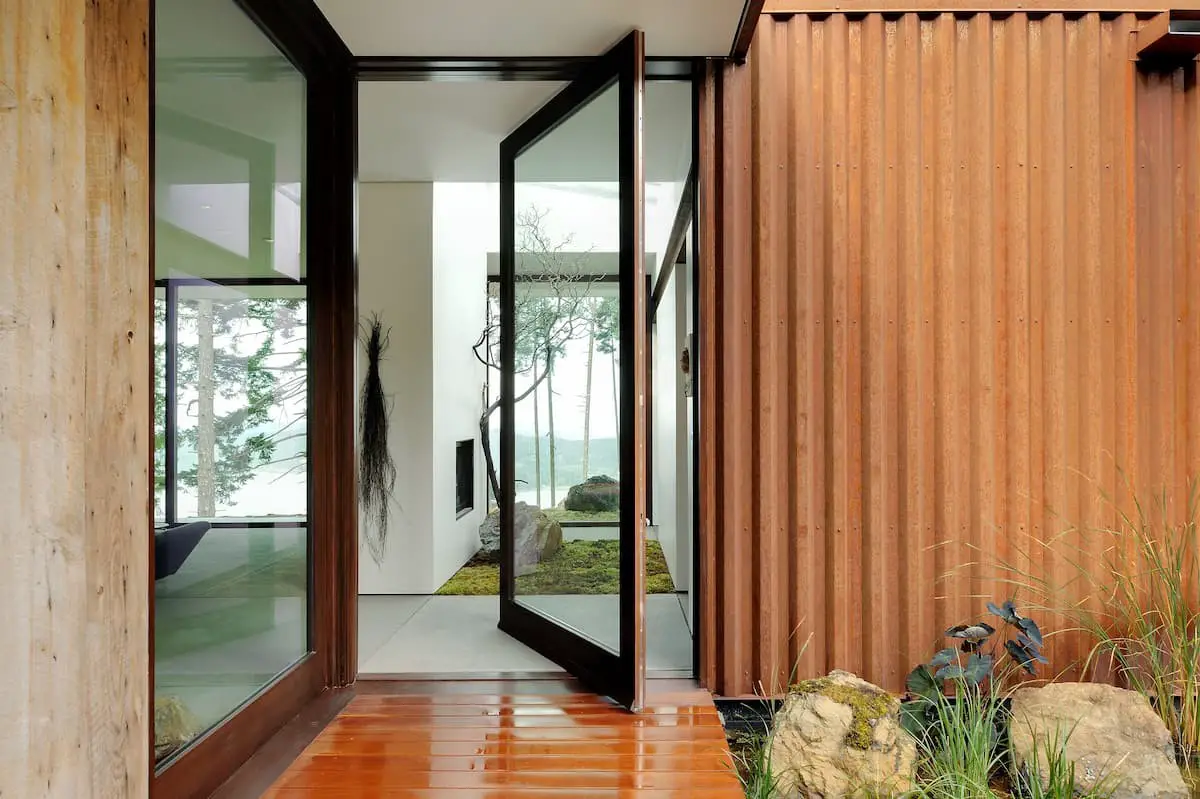
Pivot doors are a staple of commercial spaces, prized for their stability and ability to withstand harsh environmental conditions. As the name suggests, they pivot in and out, relying on the pivot handle and floor to support their metal and glass construction. Their formal aesthetic makes them a popular choice for companies and hotels, adding a touch of sophistication to these settings.
The pros and cons of pivot doors are well-balanced.
On the plus side, they offer sturdy stability, easy access, and an unobstructed view even when closed. The unique design also adds visual interest to a space. However, some may find them too contemporary for their home’s design style, while others may be deterred by the potential obstruction of views when open. Additionally, pivot doors can be expensive and have mediocre energy efficiency ratings.
Overall, pivot doors are a versatile option that can bring a touch of elegance to the right space, but it’s essential to weigh their benefits against their drawbacks before making a decision.
Accordion doors
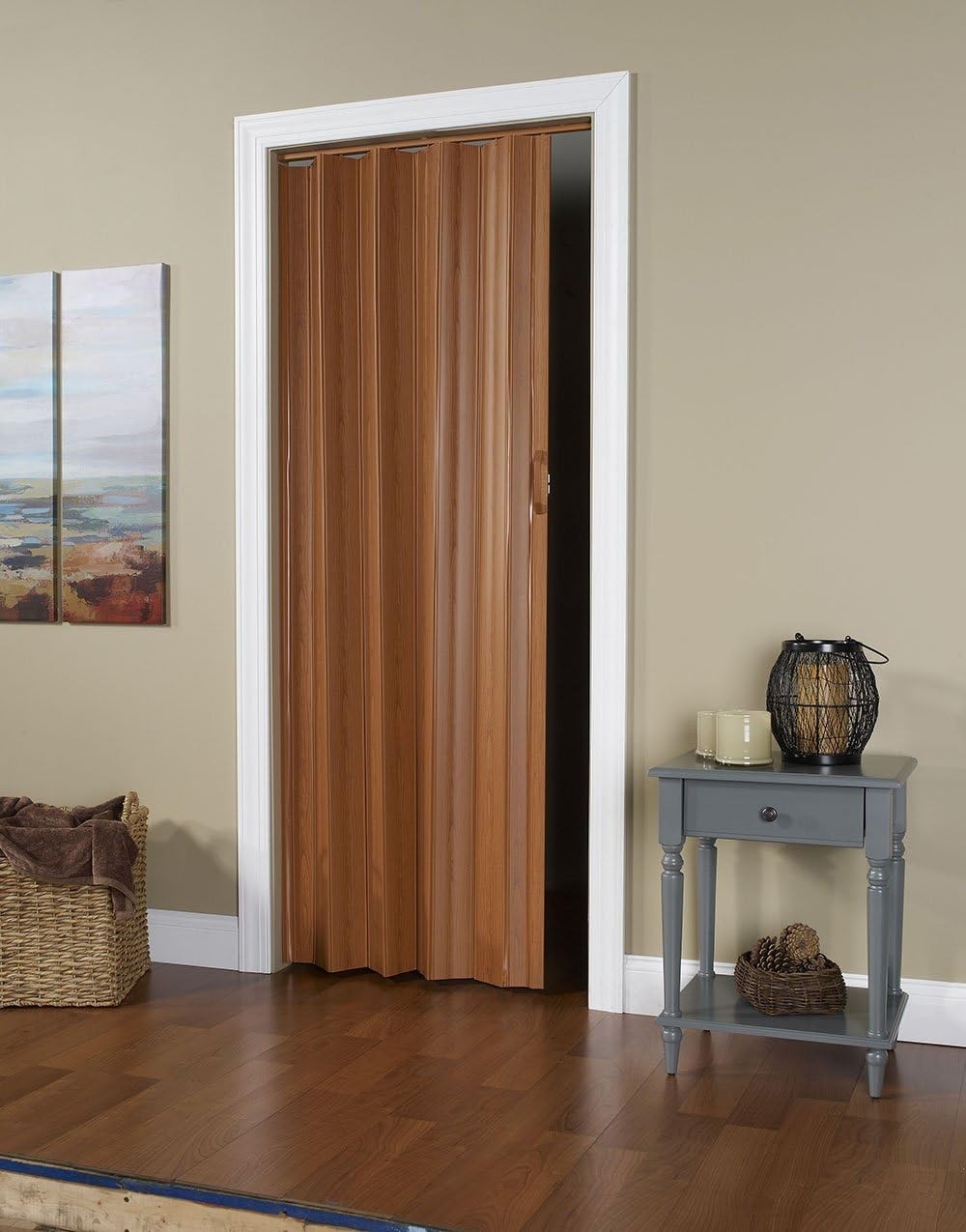
When it comes to innovative door solutions, the accordion-style glass door stands out from the crowd. Like its musical counterpart, this clever design folds in and out as needed, allowing for a seamless transition between openness and closure. One of the primary benefits of accordion doors is their enhanced security features compared to sliding glass doors. From a design perspective, they seamlessly integrate into contemporary home aesthetics.
Another trend worth noting is lift sliders, which function like bifold panels before disappearing into a track and stacking neatly on a wall. This configuration is particularly well-suited for patio doors rather than entryways.
The pros of accordion doors include energy efficiency, versatile design options, and low maintenance requirements.
However, some cons to consider are potential flaws in security, the possibility of low ease of access, lightweight construction that may not be suitable for all applications, and a higher upfront cost compared to other door options.
Center swing doors
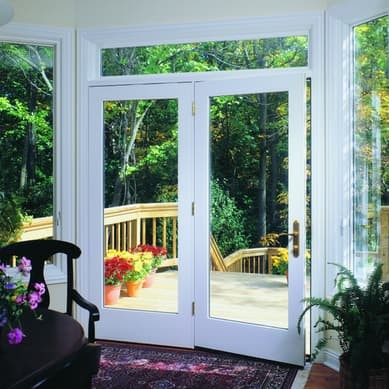
Center swing doors, although less common than pivot glass doors, are a popular choice for construction projects. Specifically, they are often made from wood and installed through a top hinge, allowing the door to swing in and out. This unique movement pattern means that when pushed to the right, the left side opens, and vice versa. As such, center swing doors are commonly found in commercial establishments where this type of functionality is beneficial.
On the plus side, these doors offer an easy in/out system, provide more variety and better views when opened, and are often easy to maintain. Additionally, they can be a great space-saving solution.
However, there are some drawbacks to consider as well. Center swing doors can be harder to lock than other types of doors, which may be a concern for security purposes.
Furthermore, they can be more costly than other options and may not provide the same level of privacy that some users require.
Shoji sliding screens
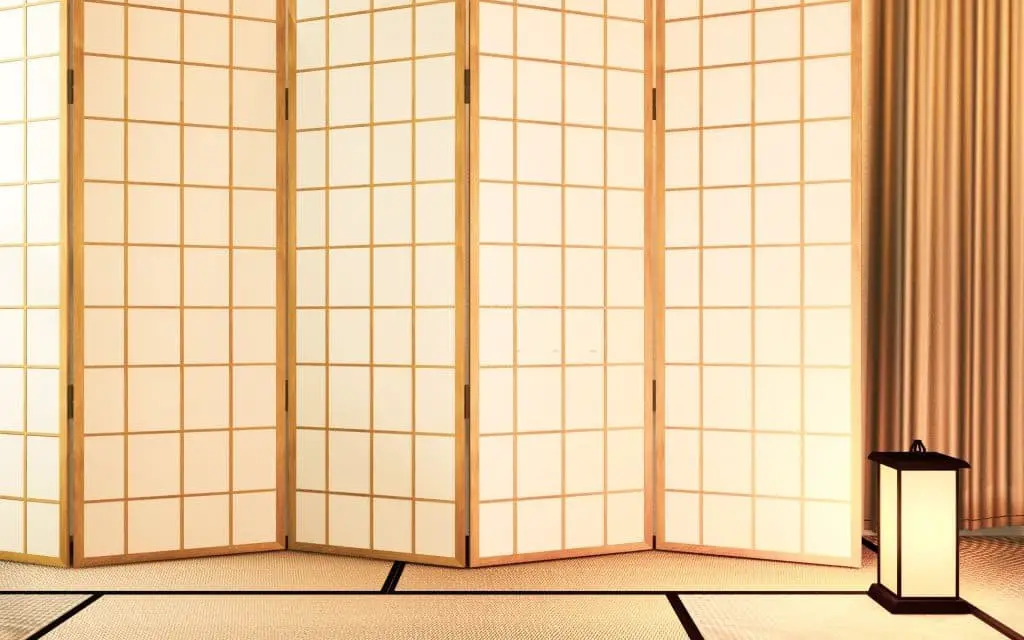
For a modern Asian-inspired look, consider incorporating shoji sliding screens into your design. These versatile panels feature a similar sliding mechanism to that of sliding glass doors, but offer greater privacy and a more compact footprint compared to traditional options. Framed in either wood or metal, these pocket-style designs can be tailored to suit various aesthetics.
On the plus side, shoji screens offer improved soundproofing over time, come with a wide range of design options, and provide an added layer of durability at an affordable cost. Plus, their compact nature leaves more floor space open for use. On the downside, accessibility may be limited due to their sliding mechanism, but overall, they are a practical and stylish solution for homeowners seeking a unique, Asian-inspired vibe.
Bi-fold doors
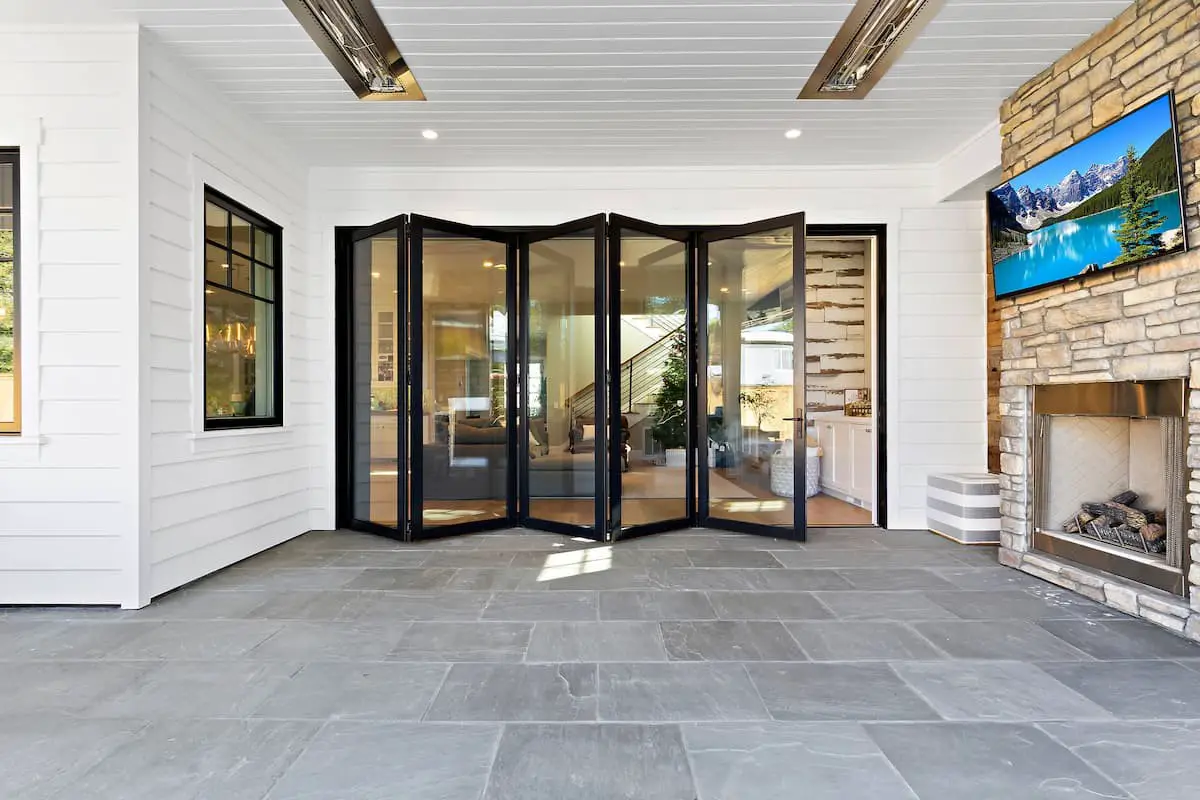
Compared to the accordion door, this modern door stands out with its unique design that splits from the middle and folds outward. Its sleek appearance is sure to impress. Moreover, it can be custom-fit to reduce maintenance costs. While it does offer a spacious feel like sliding glass doors, installation costs may be higher. In contrast, multi-track sliding doors boast a more modern aesthetic when used as a wall enclosure.
Here, four tracks and four glass panels open simultaneously, showcasing its full potential. The benefits of this door include easy installation, versatility, and a wide range of styles and finishes. However, it does come with some drawbacks, such as obstructed views from the inside due to more frame than glass, issues with door stacking, and higher costs. Additionally, security may be a concern.
Rollup glass doors
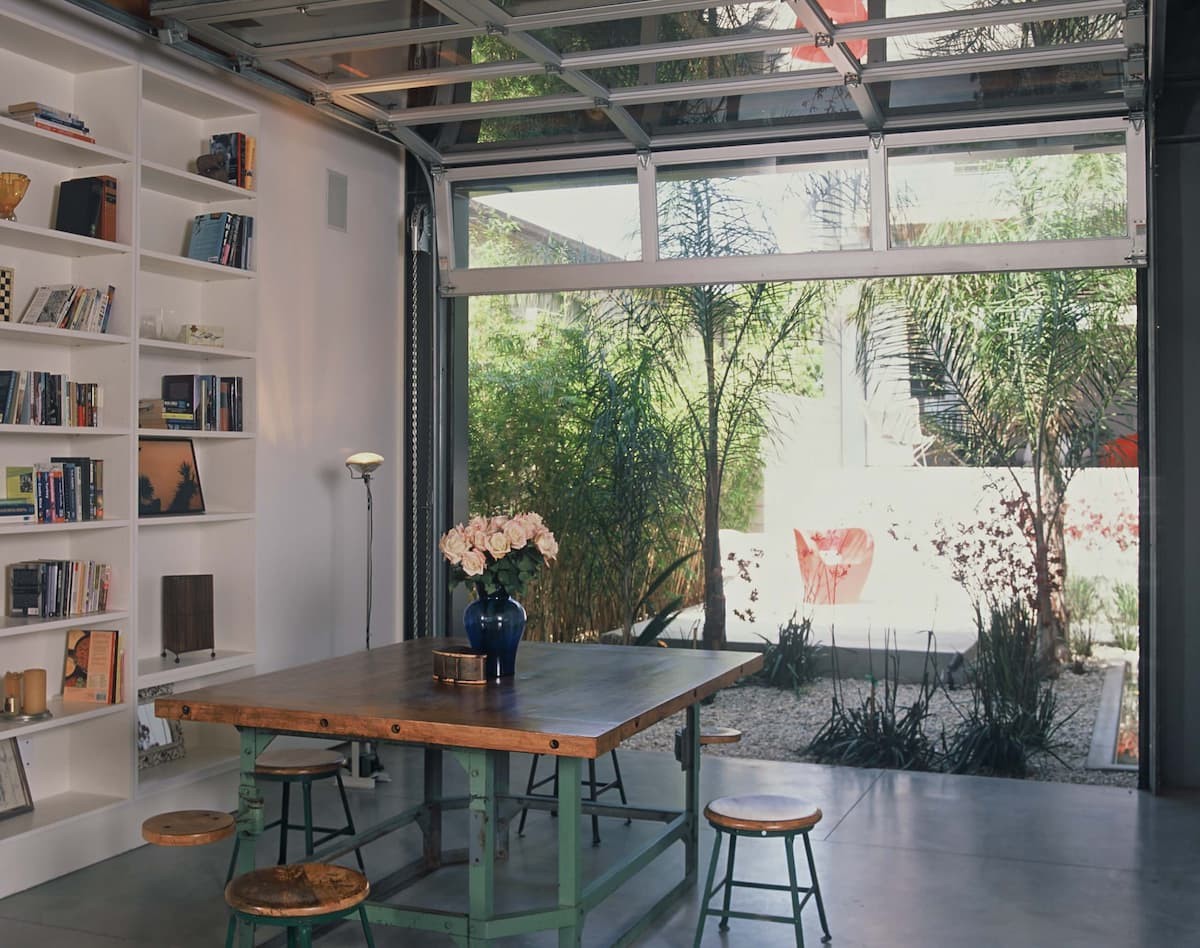
When considering non-latch door options, rollup doors are a viable alternative to traditional latching systems. Characterized by their horizontal opening and closing motion, these doors provide unobstructed access to the enclosed space when opened. The simplicity of this mechanism is undeniable, as it eliminates the need for complex locking and unlocking procedures.
In terms of materials, rollup doors can be constructed from wood or metal for a garage or shed setting.
However, when used as a door, glass options can add an aesthetic touch, elevating its visual appeal.
While there are advantages to incorporating rollup doors into your design, there are also some notable drawbacks. For instance, the limited access offered by these doors may be a concern for users seeking greater flexibility. Additionally, potential issues with door jamming and the need for regular maintenance can contribute to their overall high-maintenance nature.
Despite these limitations, rollup doors possess several compelling attributes. Notably, they offer durability, insulation, and fire resistance, making them a practical choice for those prioritizing safety and longevity.
Dutch doors
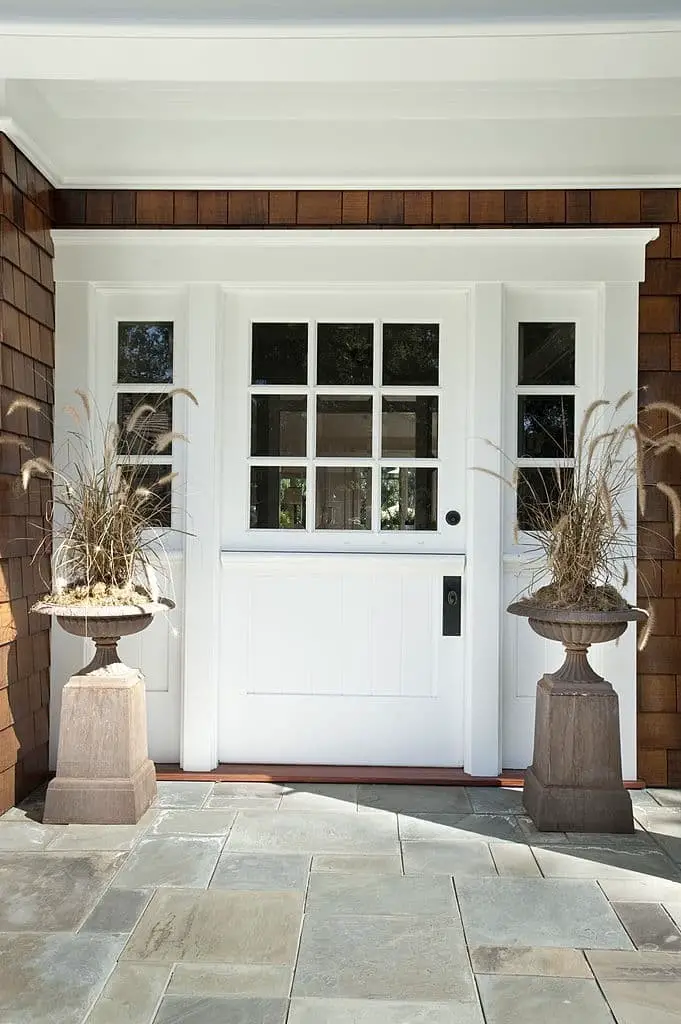
A modern rustic or farmhouse style home wouldn’t be complete without this unique door feature – a split sliding glass door that opens with a latched design, allowing the top half to swing open while keeping the bottom half closed. This distinctive look sets it apart from traditional sliding glass doors and provides an added layer of security for pets and children by keeping them safely indoors.
While some may view this design as more expensive than standard options, its benefits extend beyond aesthetics, including improved natural light penetration, enhanced airflow, and a country-inspired charm that can be particularly well-suited to offices or laundry rooms.
However, it’s essential to note the potential drawbacks, such as increased vulnerability to insect infestations due to the gap created by the split design, and the need for proper weatherproofing and sealing to prevent water seepage.
Sliding barn door
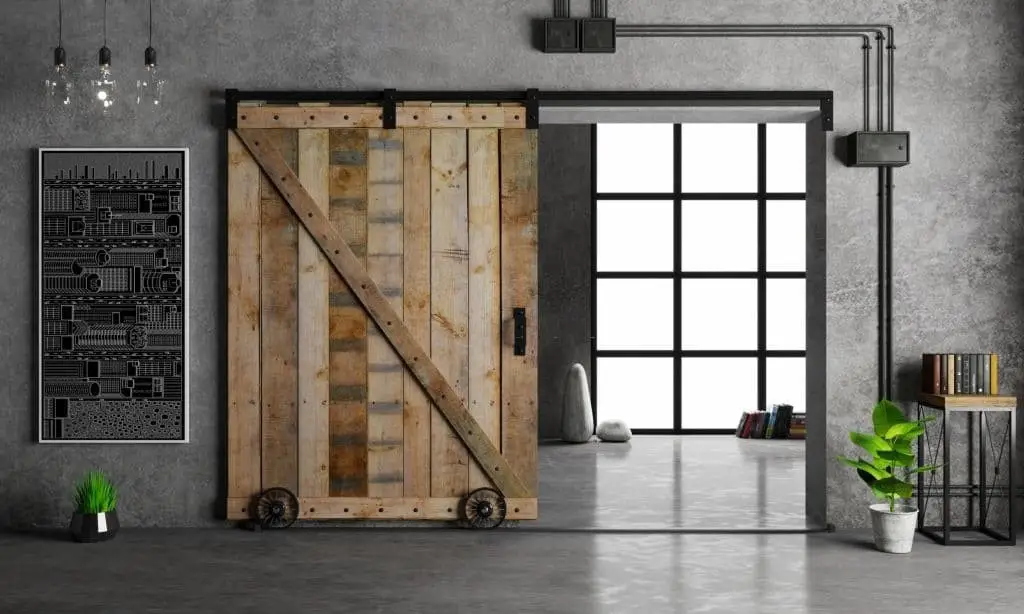
Similar to glass sliding doors, this type of door moves horizontally with a single stationary point. Its rustic finish makes it suitable for modern, contemporary, and industrial designs. Notably, it can also help create more privacy. While ideal for lofts and rooms, its bulkier design may not be as practical for main entryways compared to sliding glass doors. On the plus side, this door offers an intriguing rustic-modern look, is space-saving, and practical with a cost-efficient design.
However, some limitations apply, including constraints on the slide path and potential issues with privacy.
Single door with sidelights
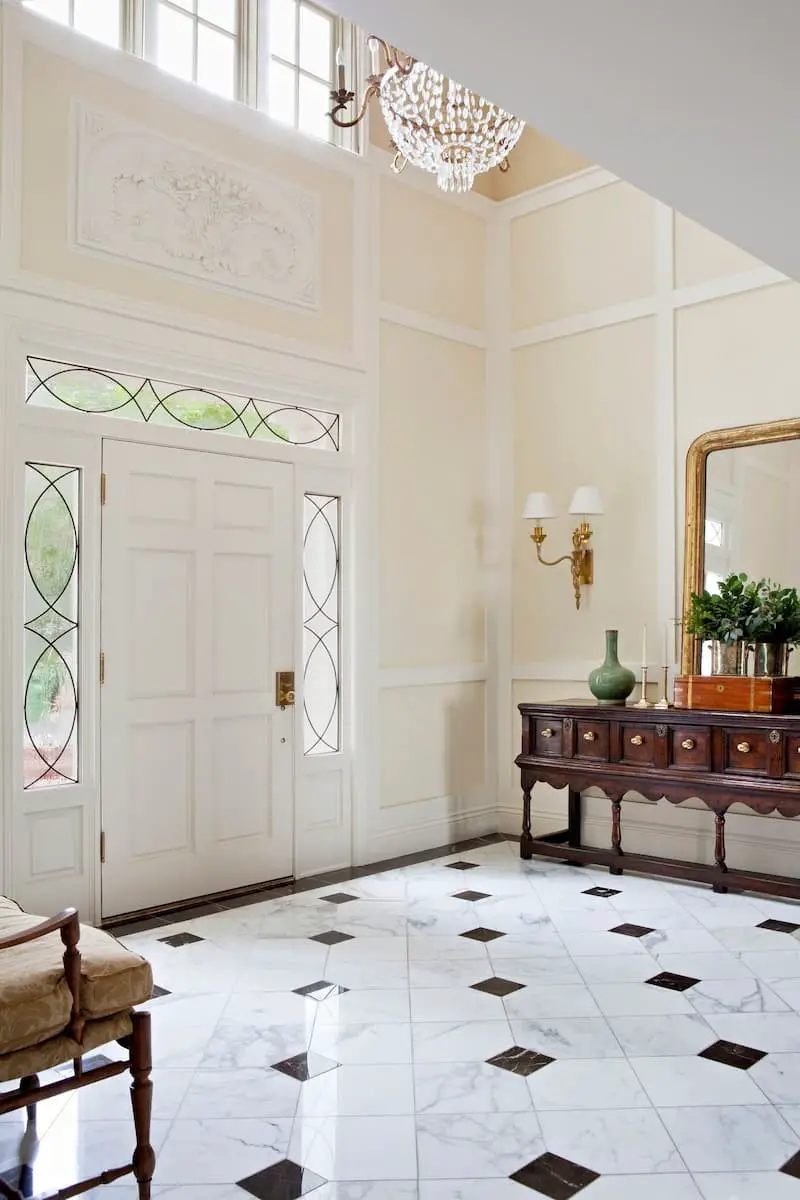
The pinnacle of modern door design, this innovative model boasts a single glass panel flanked by transparent sides, delivering the same amount of natural light as sliding glass doors while maintaining a sleek, minimalist appearance. While it may not prioritize space efficiency, its unique features and aesthetic appeal make it an attractive option for those seeking to incorporate contemporary designs into their homes.
The benefits include enhanced durability, controlled views, and an abundance of natural light. However, concerns regarding privacy and potential high costs should also be considered.
FAQs on Sliding Glass Door Alternatives
How much does it cost to replace sliding doors?
The cost of replacing a sliding door typically falls within a range of $700 to $2,500, depending on the number of panels, frame material, brand, and features. For instance, a standard sliding door can cost anywhere from $400 to $1,800, including labor costs for installation or replacement. In addition, labor expenses for new installations or replacements usually amount to between $300 to $800.
Where can I buy quality sliding doors?
When considering sliding doors, there are numerous reliable brands to explore. For instance, Superseal, Simpson, Vetter, Certain Teed, Peachtree, Marvin, Crestline, Milgard, Andersen, Kolbe and Kolbe, Pella, Weather Shield, Jeld-Wen, Simonton, and Therma-tru are all reputable options worth investigating. Each brand offers its unique features, benefits, and quality standards that can impact the overall performance and functionality of your sliding doors.
How many glass panels should doors have?
When it comes to outfitting your sliding glass door or similar openings with glass panels, there’s no definitive cap on the number of panes you can install. However, when considering sliding glass doors and their alternatives, bi-fold designs are a notable exception, as the number of glass panels required becomes more crucial.
What glass types are used for sliding glass doors and their alternatives?
When it comes to designing a private yet functional space, the choice of glass material is crucial. To maintain anonymity, consider using frosted glass, which effectively obscures visibility while still allowing in some natural light. For added resilience and reduced risk of injury, tempered glass is an excellent option. Meanwhile, reflective glass can cleverly amplify available natural light, creating a sense of spaciousness.
Ultimately, the right type of glass will depend on your specific needs and priorities.
Conclusion
While wooden latched doors and sliding glass doors are popular choices, there’s more to consider when it comes to selecting the perfect entryway for your home. In addition to sliding glass doors, you can opt for alternatives that offer a balance between aesthetic appeal and cost-effectiveness in terms of installation and maintenance costs. The key is knowing which option best suits your needs.
With so many types of alternative sliding glass doors available, it’s crucial to weigh the pros and cons of each, considering factors such as daily functionality, installation requirements, energy efficiency, maintenance needs, and overall costs. By taking a thoughtful approach to your decision, you can find the perfect fit for your home.
Related Posts
When it comes to heating an entire home, pellet stoves are often considered as a viable option. However, there are several factors to consider before determining if a pellet stove can effectively heat a whole house. Understanding the capabilities and limitations of these stoves is crucial in making an informed decision.
With the right setup and maintenance, a well-functioning pellet stove can efficiently warm up a significant portion of your home, but it may not be able to fully heat an entire dwelling. The key lies in understanding its heat output, insulation, and overall efficiency. For instance, larger homes with more windows or doors may require additional heating solutions to maintain a comfortable temperature throughout.


